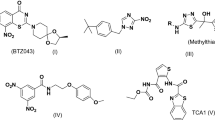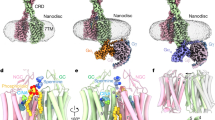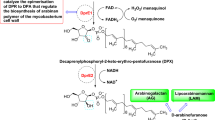Abstract
Immuno-modulation is the process of alteration in immune response due to foreign intrusion of molecules inside the body. In the present communication QSAR and molecular docking studies for immuno-modulatory activity of derivatives of gallic acid were performed. Molecular docking studies showed higher binding affinity with INFα-2, IL-6, and IL-4 receptors. Binding site residues indicate hydrogen bonds formation with gallic acid derivative compounds G-3, G-4, G-5, G-6, G-7 and G-10. Further screening through quantitative structure activity relationship model establishes the immuno-modulatory activity of the compounds G-4, G-7, G-9, G-10, G-12 and G-13. Activity was predicted through a robust statistical model, developed by forward feed multiple linear regression method with leave-one-out approach. Relationship correlating measure (r2) and prediction accuracy (rCV2) of QSAR model were 0.99 and 0.96, respectively. QSAR studies indicate that dipole moment, steric energy, amide group count, λ max (UV-visible) and molar refractivity correlate well with their activities, while decrease in dipole moment, steric energy and molar refractivity have negative correlation. Moreover, on the basis of bioavailability, in-silico ADME and toxicity risk assessment screening, we concluded that compounds G-4, G-7, G-9, G-10, G-12 and G-13 have marked immuno-modulatory activity comparable to standard drugs.
Similar content being viewed by others
Article PDF
Author information
Authors and Affiliations
Corresponding author
Rights and permissions
About this article
Cite this article
Yadav, D., Khan, F. & Negi, A. QSAR and Docking Studies of Gallic Acid Derivatives for Anticancer and Immunomodulatory Activity. Nat Prec (2011). https://doi.org/10.1038/npre.2011.6620.1
Received:
Accepted:
Published:
DOI: https://doi.org/10.1038/npre.2011.6620.1



